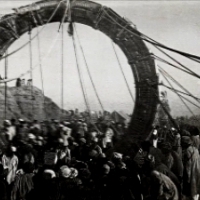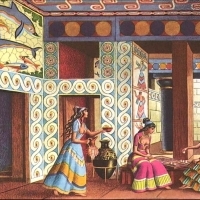Jaskinie Badami - dowód na utraconą starożytną technologię.
- : Data Publikacji.: 06-01-26
Jaskinie Badami - dowód na utraconą starożytną technologię.
: Czytaj więcej.
Jaskinie Badami - dowód na utraconą starożytną technologię.
: Czytaj więcej.Dziwne dekoracje ścienne w Persepolis, Iran/Persja. Zdjęcie zrobione po wykopaliskach w 1921 r.
: Czytaj więcej.Ruiny starożytnego Persepolis, w połowie zakopane. Zalane błotem Parseh, Iran/Persja 1870, przed oficjalnymi wykopaliskami w latach 20.
: Czytaj więcej.Po wyschnięciu Morza Aralskiego na jego dnie znaleziono pozostałości starożytnej świątyni. Archeolodzy, którzy przybyli na miejsce znaleziska, odkryli, że budynek ten pochodzi z XI-XIV wieku naszej ery i, co dziwne, jest to kopia mauzoleum Yasawi w…
: Czytaj więcej.Tajemniczy obiekt odkryty w Gizie' The Egyptian Gazette, 1928 r Es gab viele Sternentore durch die Erde. Tutaj widzimy jedną z gwiezdnych bram, znajdującą się w pobliżu jeziora Titicaca w Peru. Stany Zjednoczone zaatakowały Irak z powodu broni…
: Czytaj więcej.Zorza polarna nad katedrą Hallgrimskirkja w Reykjaviku, Islandia.
: Czytaj więcej.The Minoans, who lived on the island of Crete between 3000 and 1600 B.C.E., had a very complex culture, more advanced than many of the societies that followed it. This complexity is also shown in the artistically designed and skillfully made clothing they…
: Czytaj więcej.Skany Wielkiej Piramidy potwierdzają duże odkrycie w środku. Ujawniły bezprecedensowe szczegóły dotyczące wewnętrznej struktury Wielkiej Piramidy w Gizie. Tak zwana Wielka Pustka wewnątrz Piramidy mająca 40 metrów długości. Jej przeznaczenie pozostaje…
: Czytaj więcej.Ancient roman basalt road in western Sicily, Italy. Morten Philbert this is in Sicily, the name of the town, is Erice, its ancient and you know that as you walk in and around this town. You're transported back in time. These stone roads last forever.…
: Czytaj więcej.Przewodnik ze wskaźnikiem na ścianie pełnej inskrypcji z hieroglifami w Świątyni Luksorskiej, 1950 r.
: Czytaj więcej.Społeczność - Promuj swe miasto, wieś
© Web Powered by Open Classifieds 2009 - 2026









